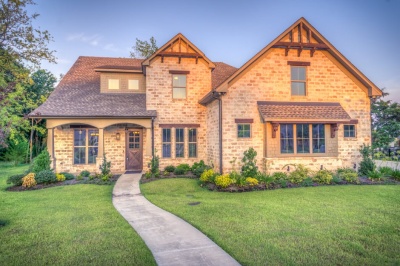Freddie Mac & Fannie Mae Simplify Appraisal Waivers for 2025

Exciting changes are on the horizon for homebuyers! Starting in early 2025, Freddie Mac and Fannie Mae are making updates that could simplify the homebuying process for your clients. These changes aim to make purchasing a home faster, less expensive, and more accessible—especially for first-time buyers.
Here’s a closer look at what this change means and how it could benefit homebuyers:
What Is an Appraisal Waiver?
An appraisal waiver allows buyers to skip the traditional in-person home appraisal during the mortgage approval process. Instead, automated tools determine the home’s value based on recent sales and other market data.
Currently, appraisal waivers are available to buyers with an LTV ratio of 80% or lower. But starting in early 2025, this threshold will increase to 90%.
How Buyers Benefit from the New 90% LTV Ratio
1. Lower Down Payments, No In-Person Appraisals
With the increased LTV threshold, buyers can qualify for appraisal waivers with just 10% down. This means fewer hurdles for buyers who may not have a large down payment saved.
2. Faster Closings
Skipping the appraisal process can shave days—or even weeks—off the homebuying timeline. Automated underwriting ensures buyers can move into their new homes more quickly.
3. Cost Savings
By avoiding the in-person appraisal, buyers could save $500 or more in fees. This money could be used for other expenses, like moving costs or furnishing their new home.
4. Reliable and Safe Process
Even without a physical appraisal, lenders will rely on accurate data like credit scores and recent comparable sales to ensure the waiver process is thorough and safe for buyers.
Why This Change Is a Win for Buyers
The new appraisal waiver guidelines address some of the most common challenges buyers face, especially first-time homebuyers. Lower upfront costs and streamlined closings make it easier for more people to achieve their dream of homeownership.
If you’re planning to buy a home in 2025, this update could make the process smoother and more affordable.
Get Prepared for 2025
As these changes roll out, staying informed will help you make the most of this opportunity. Have questions about appraisal waivers or how they could impact your buying experience? Greenway Mortgage is here to help. Let’s discuss how this new policy can benefit you. Give us a call 888-616-9885 or email us at leads@greenwaylending.com.

Understanding Rate Locks: Why Longer Locks Come with Higher Costs
When you apply for a mortgage, one of the most crucial decisions you'll face is locking in your interest rate. But why do longer rate locks tend to cost more? It all comes down to risk—both for you and the lender.
The Role of Interest Rate Fluctuations
Between the time you apply for a loan and the moment you close, interest rates will fluctuate. Sometimes, these changes are subtle, but they can also be quite volatile, even shifting from one minute to the next. Locking in your rate serves as a safeguard against rising rates, much like purchasing an insurance policy.
The Lender's Perspective: Risk Management
When you lock in your rate, you're effectively transferring the risk of rising rates to the lender. To manage this risk, lenders often purchase financial instruments called "hedges," such as U.S. Treasury Bonds, which move inversely to interest rates. However, these hedges come at a cost. The longer the lock period, the more expensive the hedge, which is reflected in the cost of your loan.
How Loan Type Influences Rate Lock Costs
The type of loan you're considering can also influence the cost of a rate lock. Some loans, like adjustable-rate mortgages (ARMs), are tied to indexes that move more slowly compared to the daily fluctuations in the broader market. This reduced volatility can result in lower costs for longer rate locks.
Making the Right Decision for You
Predicting interest rate movements is nearly impossible, which is why choosing the right rate lock duration often comes down to personal comfort. If the thought of fluctuating rates makes you uneasy, opting for a longer lock—even at a higher cost—might be worth the peace of mind. On the other hand, if you're comfortable with a bit of risk, a shorter lock could potentially save you money.
Whatever your choice, we're here to guide you through the process and ensure you feel confident every step of the way.
MarketMinute | How long have typical owners lived in their homes?


|
According to payroll processor ADP, private companies added 475k new jobs in February. ADP also revised January's report upward by 801K. |
|
In his testimony before Congress, Fed Chair Jerome Powell said he still expects a quarter point Fed policy rate hike at this month's meeting. |
|
New jobless claims came in at 215k, the lowest this year. Continuing claims' 4-week average fell to 1.48 million, the lowest since 1970. |

|
Pending home sales were down 5.7% in January, continuing what is now a 3-month drop in transactions as inventory remains at an all-time low. |
|
Record increases in home prices translate to record levels of equity for homeowners. The average mortgage holder has $185K in equity. |
|
According to Redfin, U.S. homeowners had lived an average of 13.2 years in their homes in 2021, up from the 10.1-year average a decade ago. |

Prior to Day 1 Certainty, you would have to manually provide us with several months’ worth of documents just to verify your assets and income, often multiple times during the loan process. With Day 1 Certainty, we can automatically collect all your information and update it as needed.
Using Day 1 Certainty, helps us provide you with a SMOOTHER loan process and a faster closing. Some exclusions do apply as there are certain parameters the loan must meet to determine if it fits Day 1 Certainty criteria.
WHAT YOU SHOULD KNOW
• Fannie Mae Loans Only
• Verifies income and assets electronically
• No income docs or bank statements required
• Employment types limited; W2 and some self-employed
• Appraisal may not be required
• Restrictions apply, talk to your Greenway Loan Officer for more information.

Move Up with a Bridge Loan and bridge the gap in financing between your current home and your dream home!
Buying a new home before you can sell your old one can present quite the financial conundrum. This is mostly because you have to come up with the cash for a new property when you don’t have access to the home equity you have already built up in your existing property. That’s where a bridge loan comes in.
What is a Bridge Loan?
A bridge loan, also called a “wrap” or “gap financing,” allows borrowers to purchase new property by accessing the equity in their current property before it’s sold.
How does a Bridge Loan Work?
While bridge loans can come in different amounts and last for varying lengths of time, they are meant to be short-term tools. Generally speaking, bridge loans are temporary financing options intended to help real estate buyers secure initial funding that helps them transition from one property to the next.
Let’s say you found your dream home and need to buy it quickly, yet you haven’t had the time to prepare your current residence for sale, let alone sell it. A bridge loan would provide the short-term funding required to purchase the new home quickly, buying you time to get your current home ready for sale. Ideally, you would move into your new home, sell your old property, then pay off the loan.
Program Details:
-
Perfect for borrowers in a seller’s market
-
Fast & flexible underwriting and execution
-
$500,000 Minimum loan amount
-
1-4 Unit Single Family Residence
-
Primary residences, second homes and investment properties
The Fine Print
-
Property must be listed on MLS
-
55% maximum LTV
-
Requires excellent credit - 680 minimum FICO
-
Higher DTI ratios considered
Bridge loans are the kind of loan you look to obtain when you need to move forward and you can’t do it any other way. If you are dead-set on purchasing a property but struggle to make the financials work, a bridge loan could truly save the day.
Click here to Contact Greenway today to see if you could qualify for a Bridge Loan!


.png)


.jpg)
.jpg)